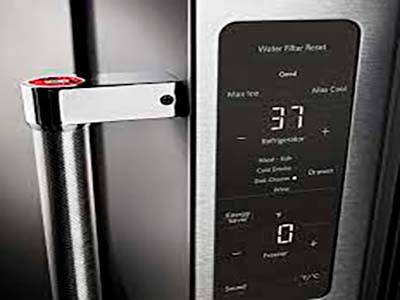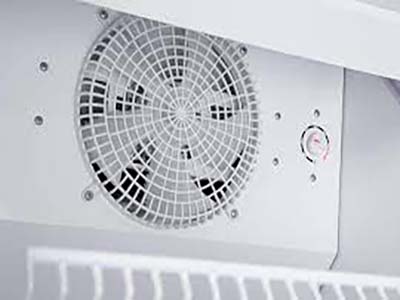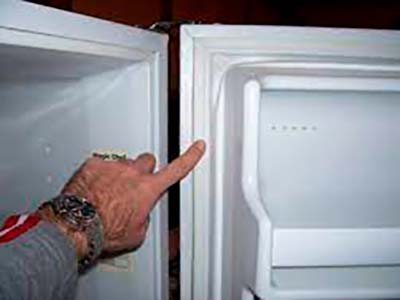When these appliances stop cooling, it can be a stressful situation. In this article, we will guide you through the steps to troubleshoot and resolve the issue when your fridge and freezer not cooling as they should.
Troubleshooting Steps
1. Checking Temperature Settings
- Incorrect Settings: Setting the temperature too high or too low can affect the cooling efficiency of your appliances.
Solutions:
- Solution: Consult your appliance’s manual for the recommended temperature settings. Adjust the settings within the suggested range for your fridge and freezer. Monitor the temperature over time to ensure it stabilizes within the desired range.
- Poor Ventilation: Lack of adequate space around the fridge can lead to restricted airflow, causing it to overheat and lose cooling efficiency.
Solutions:
Solution: Move the refrigerator carefully to ensure there is enough clearance on all sides for proper ventilation. Remove any obstructions from the vents at the back or under the refrigerator to allow air to circulate freely.

3. Cleaning Condenser Coils
Causes:
- Accumulated Dust and Debris: Over time, dust and debris can accumulate on the condenser coils, reducing their ability to dissipate heat effectively.
Solutions:
Perform routine cleaning of the condenser coils as recommended by the manufacturer: Use a brush or vacuum cleaner to remove dust and debris gently
- Obstructed or Faulty Fan: The evaporator fan may become obstructed by food items or ice buildup, or it may malfunction over time.
Solutions:
- Perform routine cleaning of the condenser coils as recommended by the manufacturer: Use a brush or vacuum cleaner to remove dust and debris gently

5. Evaluating the Thermostat
Causes:
- Thermostat Malfunction: A malfunctioning thermostat can result in inaccurate temperature readings and improper cooling.
Solutions:
- Solution: Test the thermostat’s continuity using a multimeter as per the manufacturer’s instructions. If it fails the test, replace it with a compatible replacement part to regain precise temperature control.
6. Testing the Compressor
Causes:
- Compressor Issues: Problems with the compressor can result from wear and tear, electrical faults, or refrigerant leaks.
Solutions:
- Solution: If you suspect compressor issues, it’s advisable to contact a professional technician. They can diagnose the problem and recommend repair or replacement as needed, as this can be a complex component to handle.
7. Verifying Door Seals
- Damaged or Dirty Seals: Over time, door seals can wear out or become dirty, allowing warm air to enter the fridge.
Solutions:
- Solution: Wipe the seals with a damp cloth to remove dirt and debris. If the seals are damaged, replace them with compatible replacements to ensure a proper seal and maintain cooling efficiency.

8. Assessing Refrigerant Levels
Causes:
- Refrigerant Leak: Leaks can occur due to damaged coils or other components within the refrigeration system.
Solutions:
- Solution: Refrigerant-related issues require specialized knowledge and equipment. Contact a professional technician to assess and repair any refrigerant leaks, as attempting to fix this issue without the necessary expertise can be hazardous.
DIY Solutions
1. Adjusting Temperature Settings
Causes:
- Incorrect Settings: If the temperature settings are not aligned with the manufacturer’s recommendations, your appliances may struggle to maintain the right cooling levels.
Solutions:
- Solution: Consult your appliance’s manual for recommended temperature settings. Adjust the settings accordingly and allow some time for the appliances to stabilize at the desired temperatures.
2. Improving Ventilation
Causes:
- Inadequate Airflow: Insufficient space around your fridge and freezer can hinder airflow, leading to reduced cooling efficiency.
Solutions:
- Solution: Ensure there is ample clearance on all sides of your appliances for proper ventilation. Remove obstructions and consider repositioning the appliances to improve airflow.
3. Cleaning Condenser Coils
Causes:
- Dust and Debris Buildup: Regular accumulation of dust and debris on the condenser coils can impede heat dissipation, affecting cooling performance.
Solutions:
- Solution: Perform routine cleaning of the condenser coils as recommended by the manufacturer. Use a brush or vacuum cleaner to remove dust and debris gently.
4. Checking and Repairing the Evaporator Fan
Causes:
- Obstructions or Damage: If the evaporator fan is blocked or damaged, it cannot circulate cold air effectively.
Solutions:
- Solution: Inspect the fan for any obstructions or damage. If you find any issues, address them promptly to restore proper airflow within the appliances.
5. Replacing a Faulty Thermostat
Causes:
- Thermostat Malfunction: A malfunctioning thermostat can lead to inaccurate temperature control, resulting in poor cooling.
Solutions:
- Solution: If the thermostat fails the continuity test, replace it with a compatible replacement part to regain precise temperature control.